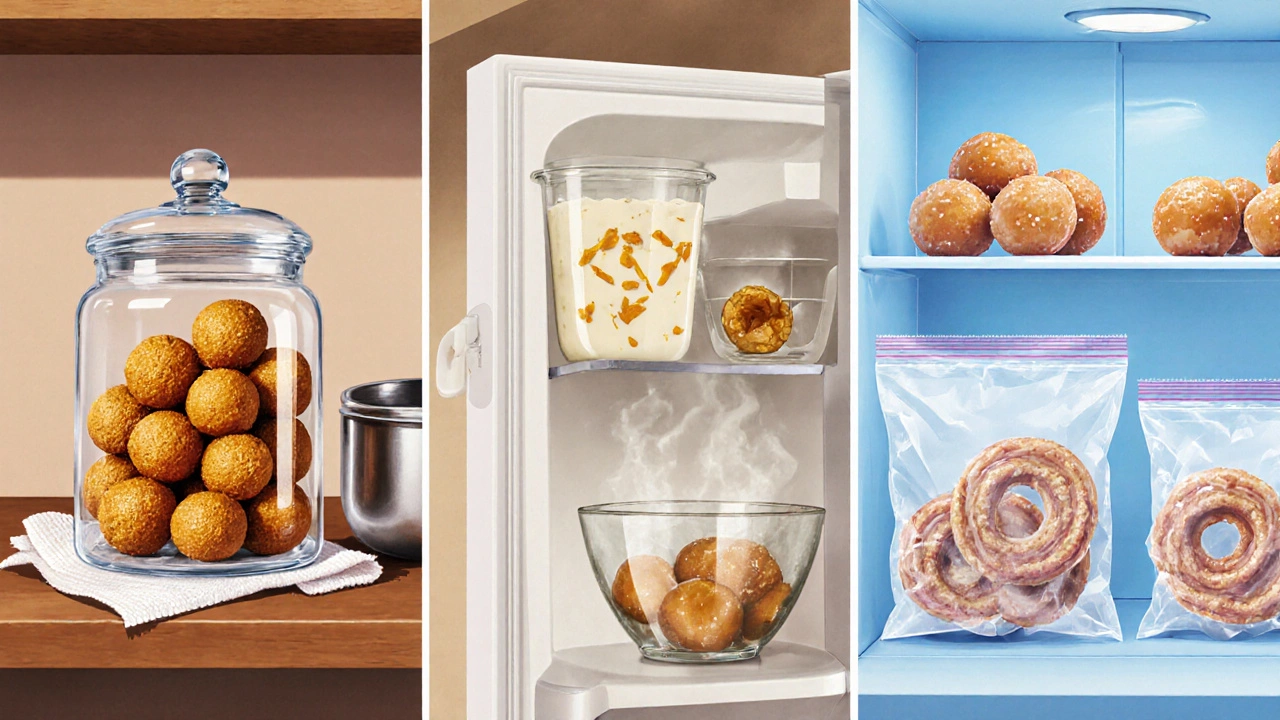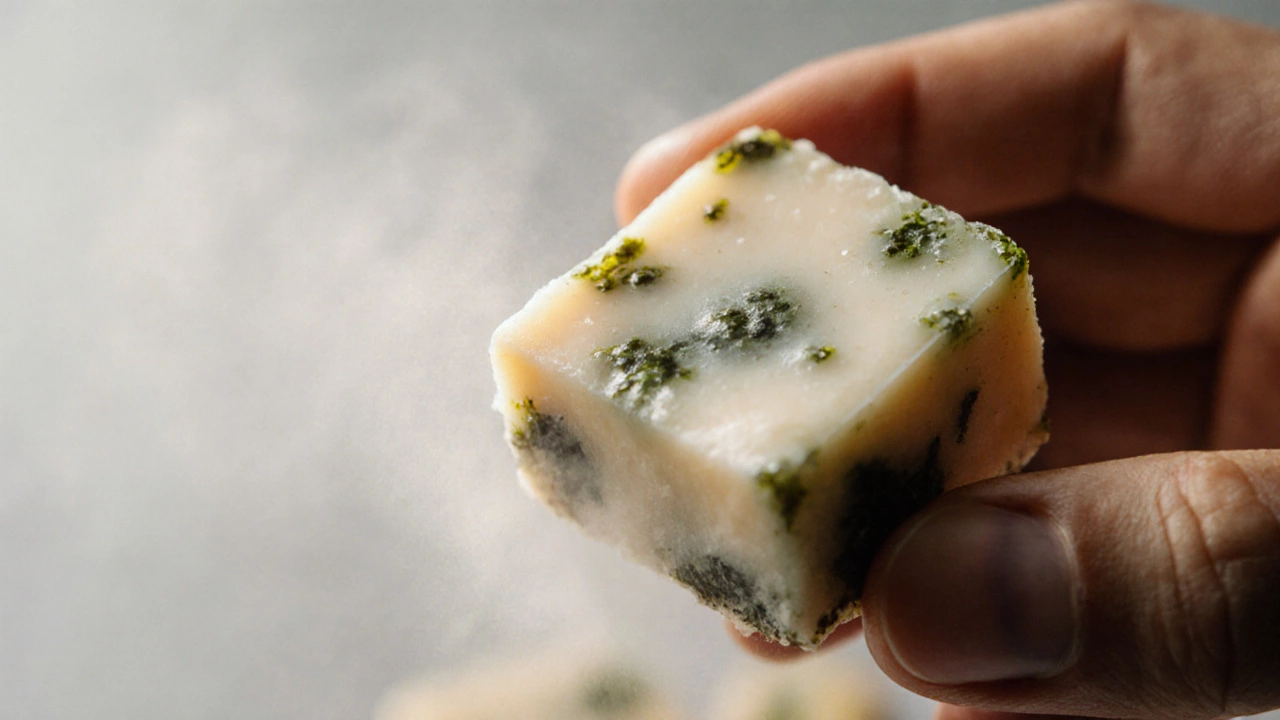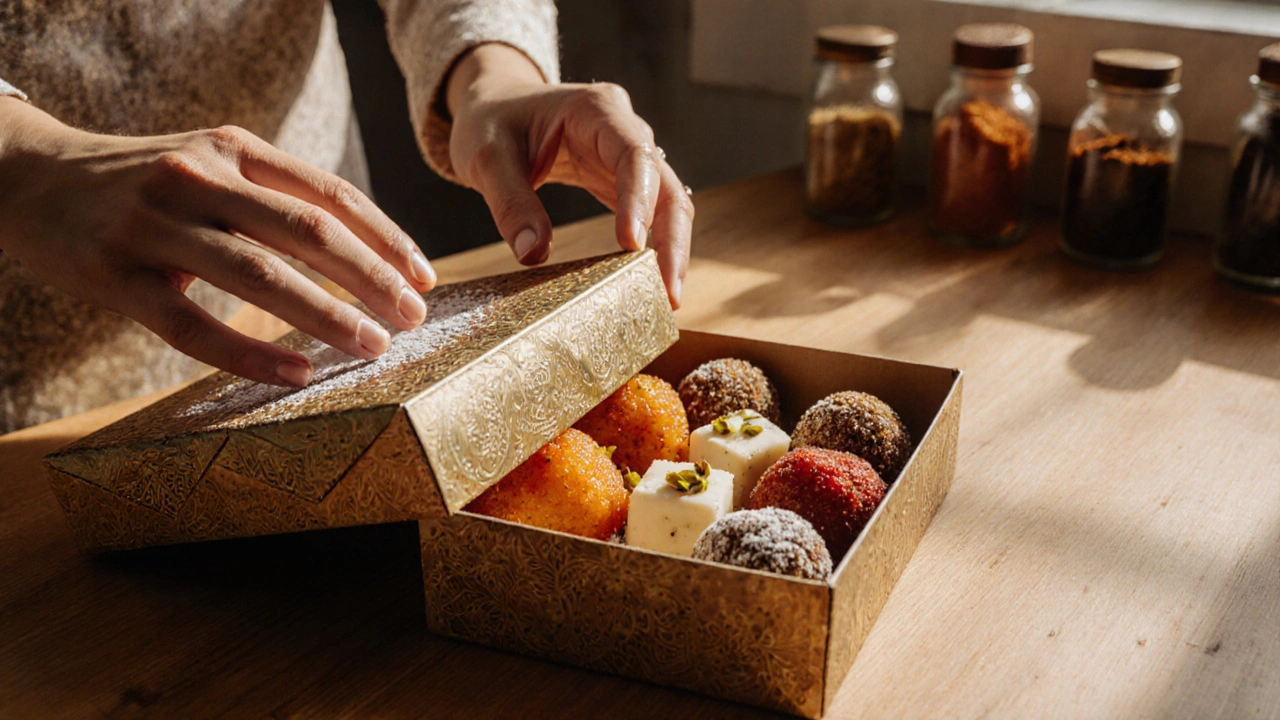25 Oct 2025
- 0 Comments
Indian Sweets Shelf Life Calculator
Ever opened a box of Indian sweets and wondered whether they’re still safe to eat? You’re not alone. The sweet world of Mithai, laddus, barfis, and more can be confusing when it comes to freshness. This guide breaks down exactly how long different Indian desserts last, how to store them so they stay soft and tasty, and the tell‑tale signs that they’ve turned.
Why Indian sweets spoil faster than other desserts
Most Indian sweets are built on a few core ingredients: ghee, milk, sugar, and nuts. When you combine moisture, fat, and sugar, you create a perfect breeding ground for microbes if the environment isn’t controlled. The higher the water activity (how much free water is in the product), the quicker bacteria or mold can grow. Milk‑based sweets like kheer or gulab jamun have the most water, so they need the coldest storage. Dry, crumbly sweets such as barfi or ladoos last longer because they hold less free water.
Key factors that affect shelf life
- Ingredient composition: Milk and fresh cream age quickly, while sugar acts as a preservative.
- Moisture content: Higher water activity means faster spoilage.
- Packaging: Airtight containers slow oxidation and keep pests out.
- Temperature: Warm rooms accelerate bacterial growth; refrigeration slows it down.
- Exposure to light & air: Can cause rancidity in ghee or nuts.
Typical shelf life by sweet type
Below is a quick snapshot. Remember that these are averages-your local climate and how you store the sweets will shift the numbers a bit.
| Sweet | Room temp (20‑25°C) | Refrigerated (4°C) | Frozen (‑18°C) |
|---|---|---|---|
| Ladoo | 7‑10 days | 3‑4 weeks | 2‑3 months |
| Barfi | 5‑7 days | 2‑3 weeks | 2‑3 months |
| Gulab Jamun | 3‑5 days | 2‑3 weeks | 3‑4 months |
| Halwa | 5‑8 days | 2‑3 weeks | 3‑4 months |
| Jalebi | 2‑3 days (crispy) / 5‑7 days (soft) | 1‑2 weeks | 2‑3 months |
| Rasgulla | 3‑5 days | 2‑3 weeks | 3‑4 months |
| Kheer | 2‑3 days | 1‑2 weeks | 2‑3 months |

How to store Indian sweets the right way
Storing sweets isn’t a one‑size‑fits‑all game. Here’s a rundown for the most common scenarios.
- Room temperature: Use airtight glass jars or stainless steel containers. Keep them away from direct sunlight. This works best for dry sweets like ladoos and barfis.
- Refrigeration: Place sweets in a sealed container, then add a paper towel to absorb excess moisture. Refresh the towel every couple of days to keep the texture from getting soggy. Milk‑based sweets such as kheer and gulab jamun should always be refrigerated after cooling.
- Freezing: Most sweets survive a freeze‑thaw cycle without losing flavor. Wrap each piece in parchment, then seal in a zip‑top bag. Thaw overnight in the fridge, not at room temperature, to avoid condensation.
Red flags: How to tell if an Indian sweet has gone bad
Even if the date on your jar says it’s still good, trust your senses.
- Smell: A sour, rancid, or fermented odor means microbes have taken hold.
- Texture: Ghee‑based sweets should stay smooth. If they feel gritty or overly sticky, they may be spoiled.
- Color change: Dark spots, white mold growth, or a dulling of the original hue are warning signs.
- Taste: A bitter aftertaste, especially in milk‑based sweets, usually points to spoilage.
If any of these appear, discard the sweet. It’s better to be safe than risk food‑borne illness.

Quick checklist for fresh Indian sweets
- Inspect the packaging: Look for airtight seals and no visible damage.
- Note the production date: Most sweets stay safe within the time frames listed above.
- Choose storage based on sweet type (dry vs. moist).
- Keep the container away from heat sources and direct sunlight.
- Re‑check the sweet every 2‑3 days for off‑smells or mold.
- When freezing, label with the date and type of sweet.
Frequently asked questions
Can I keep homemade ladoo at room temperature for a week?
Yes, as long as the ladoo is made with low‑moisture ingredients like roasted gram flour, ghee, and sugar, and stored in an airtight jar away from humidity. Expect it to stay fresh 7‑10 days.
Do frozen jalebi lose their crispness after thawing?
A little. The outer crust softens, but you can re‑crisp them in a hot pan for a minute on each side. The flavor remains unchanged.
Is it safe to eat barfi that smells slightly buttery after a month in the fridge?
If the smell is just the natural buttery aroma from ghee, it’s likely fine. However, check for any sour or rancid notes. When in doubt, discard.
How long does kheer stay good after cooking?
Kheer should be cooled quickly and refrigerated within two hours. It stays safe for 2‑3 days, but the texture may change after the third day.
Can I reuse the syrup from leftover gulab jamun?
Only if you boil the syrup again for at least five minutes to kill any microbes. Store the reheated syrup in a clean glass bottle in the fridge for up to a week.
Understanding the Indian sweets shelf life helps you enjoy these treats at their best and avoid waste. Whether you’re gifting a box of ladoos or planning a festive feast, follow these storage tips, keep an eye on the warning signs, and you’ll always have delicious, safe sweets on hand.
